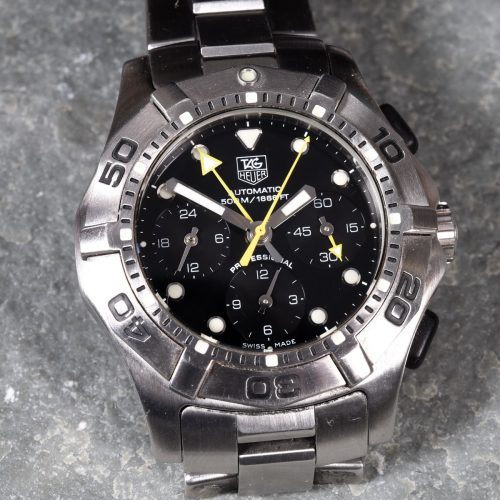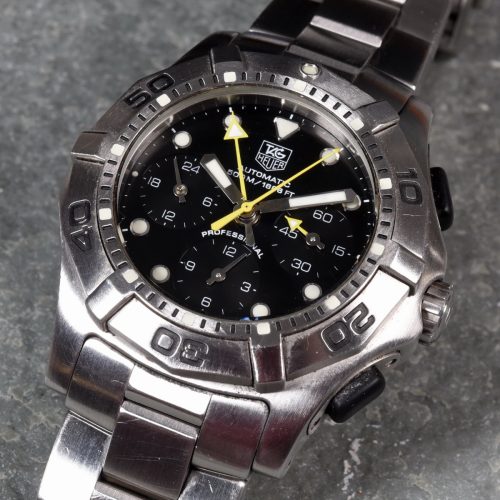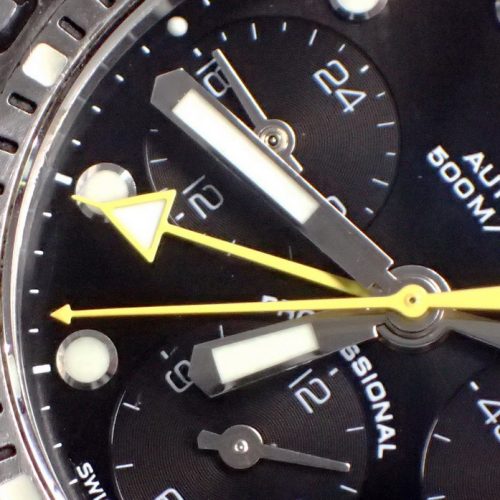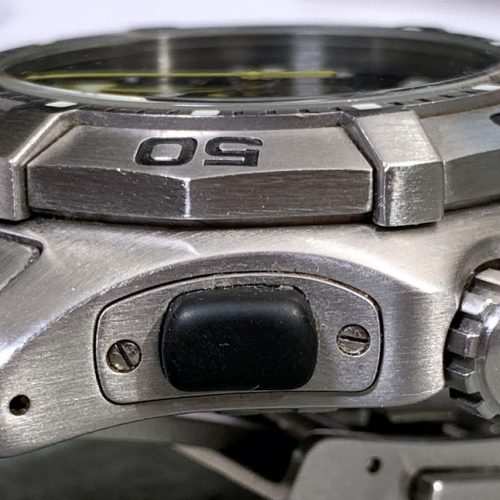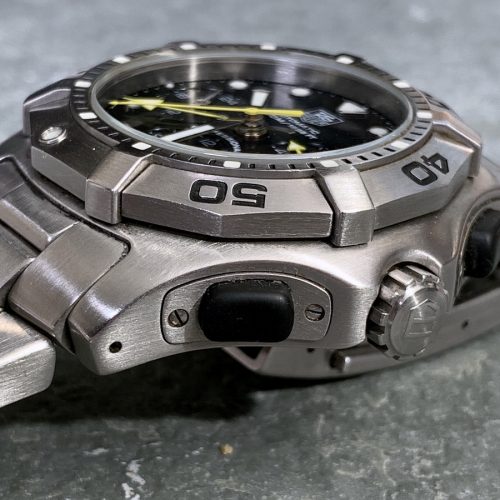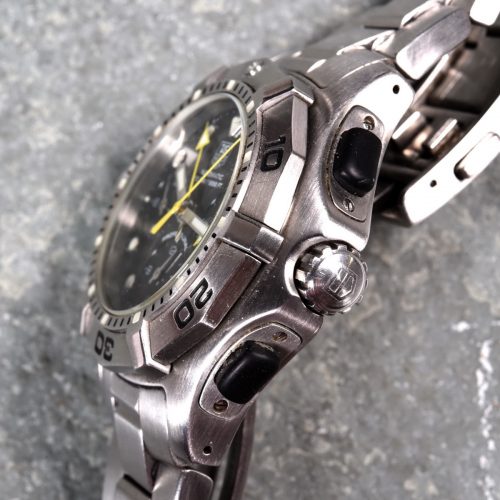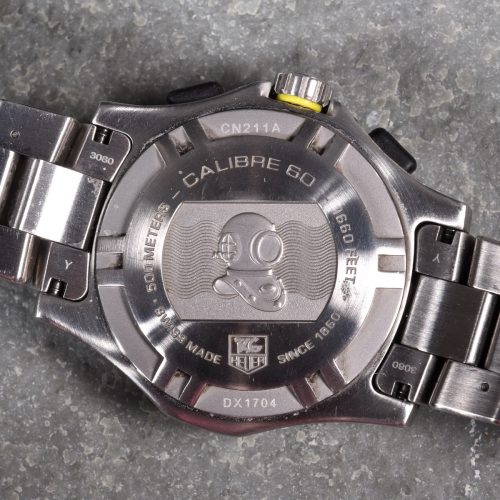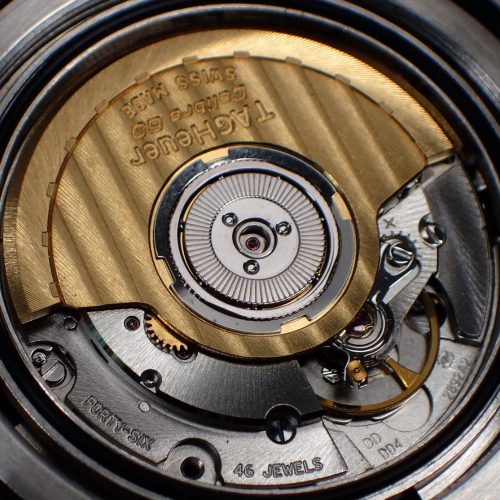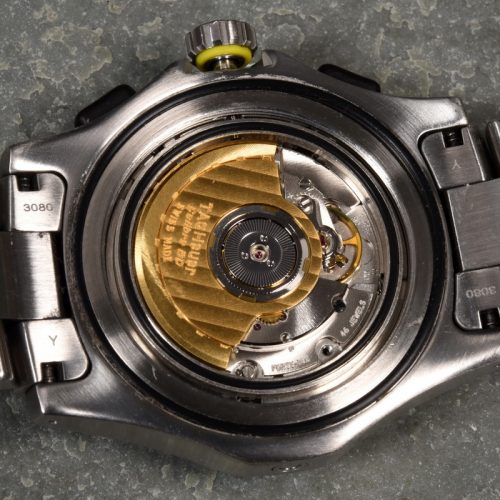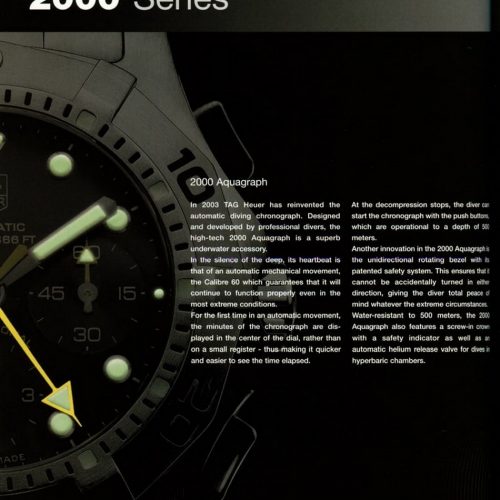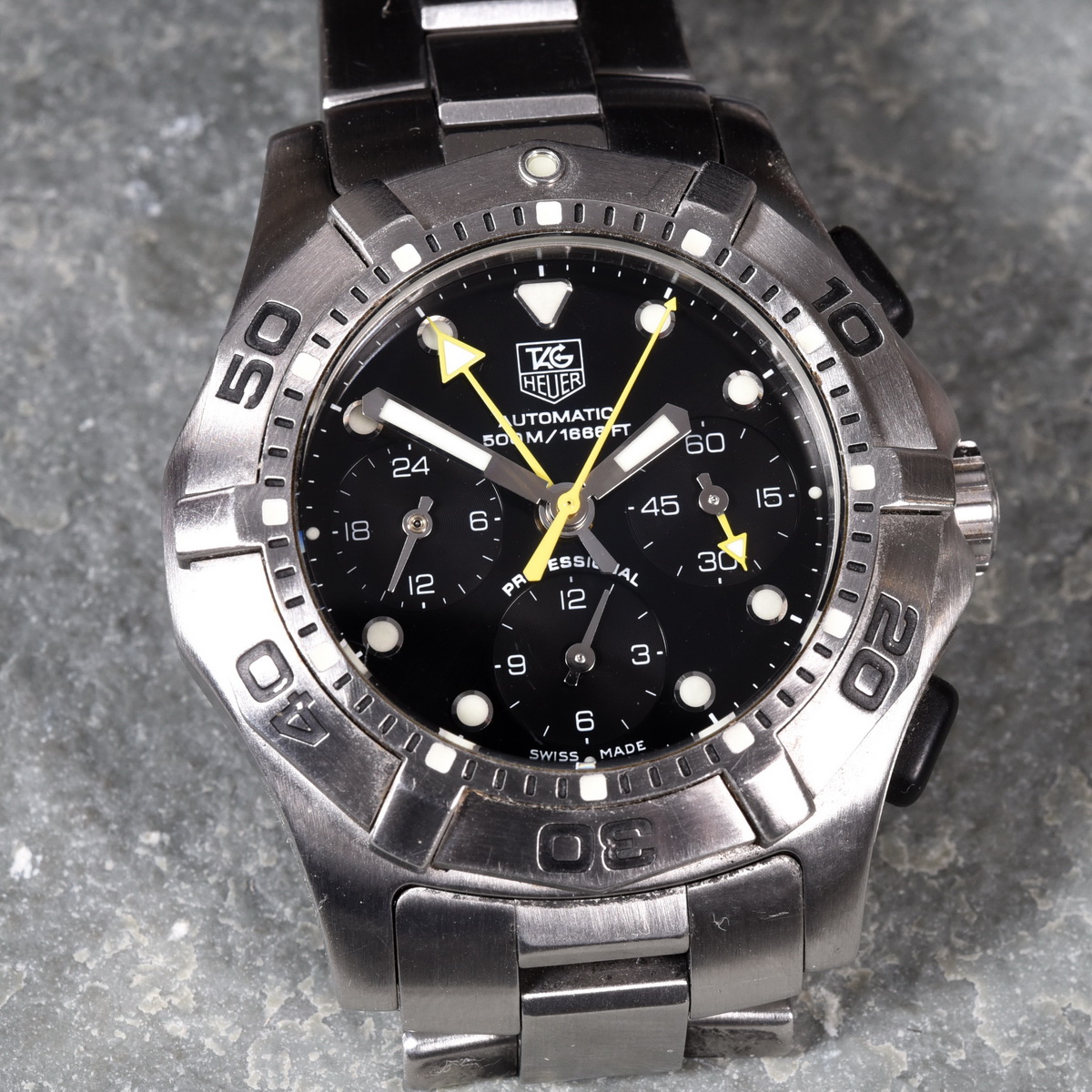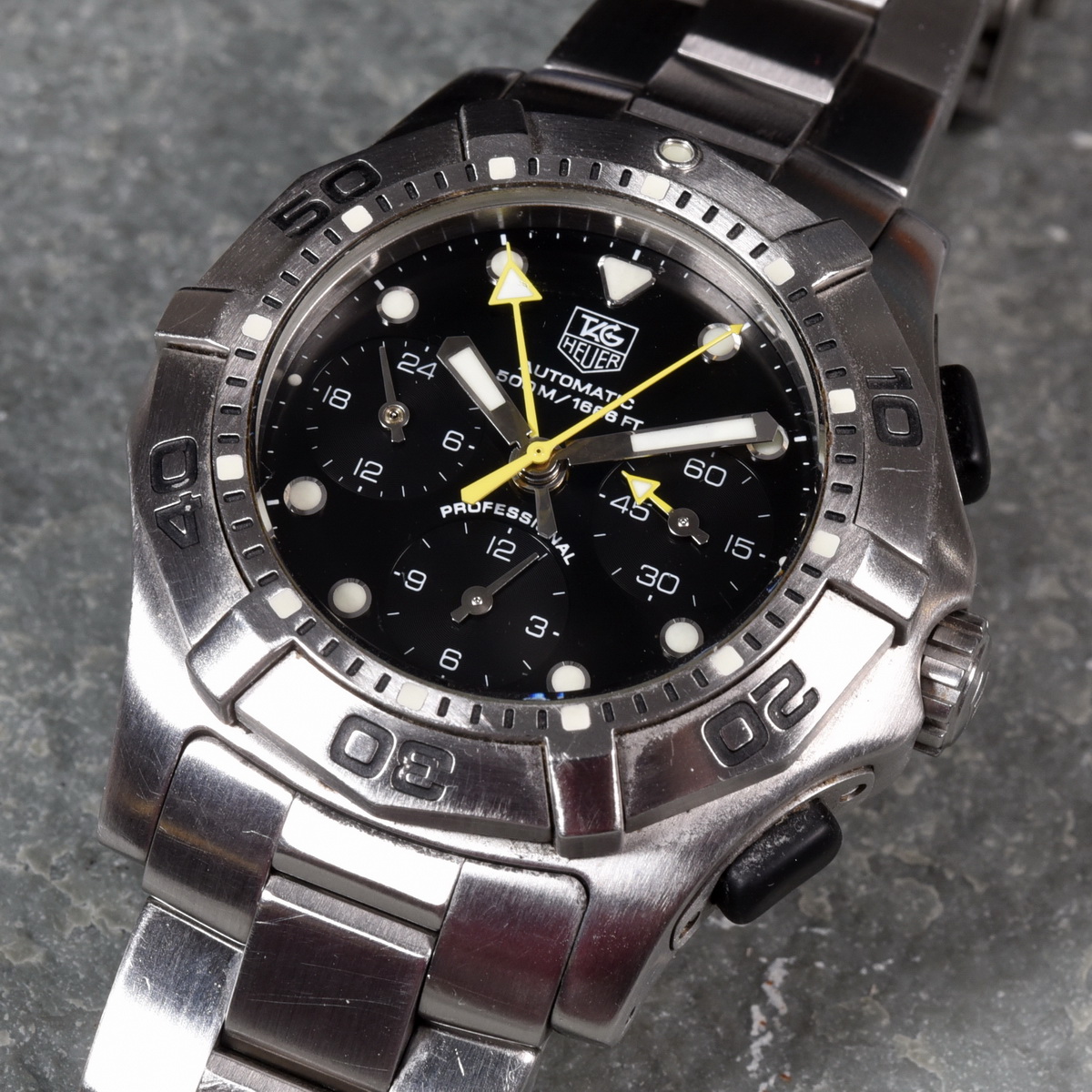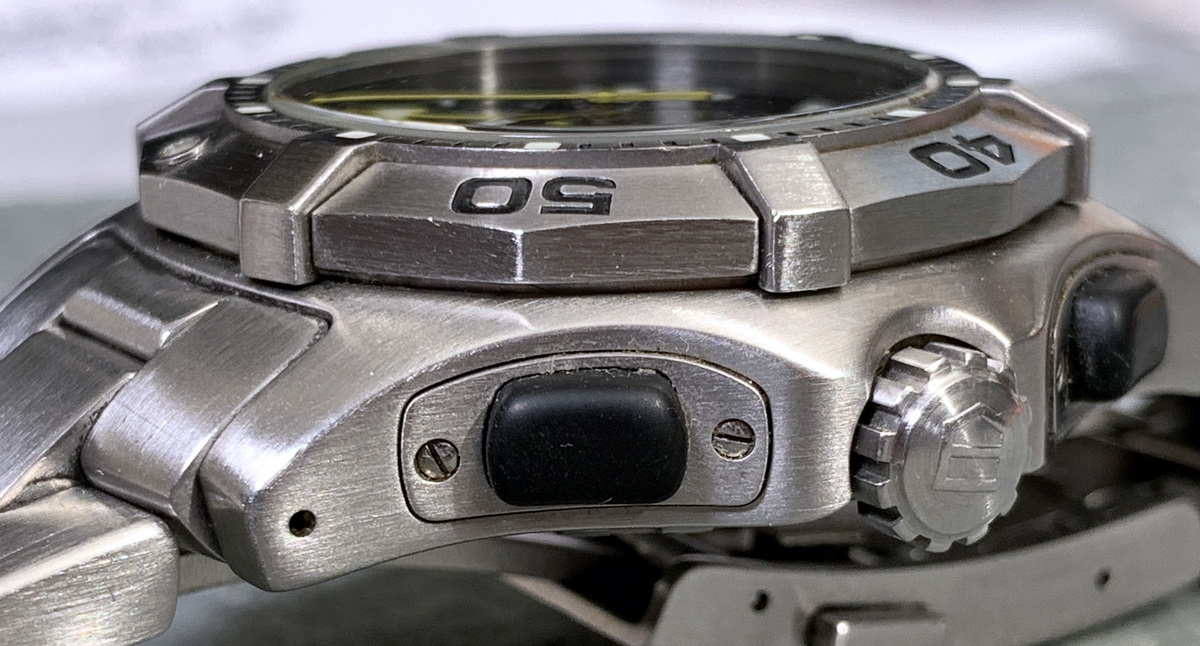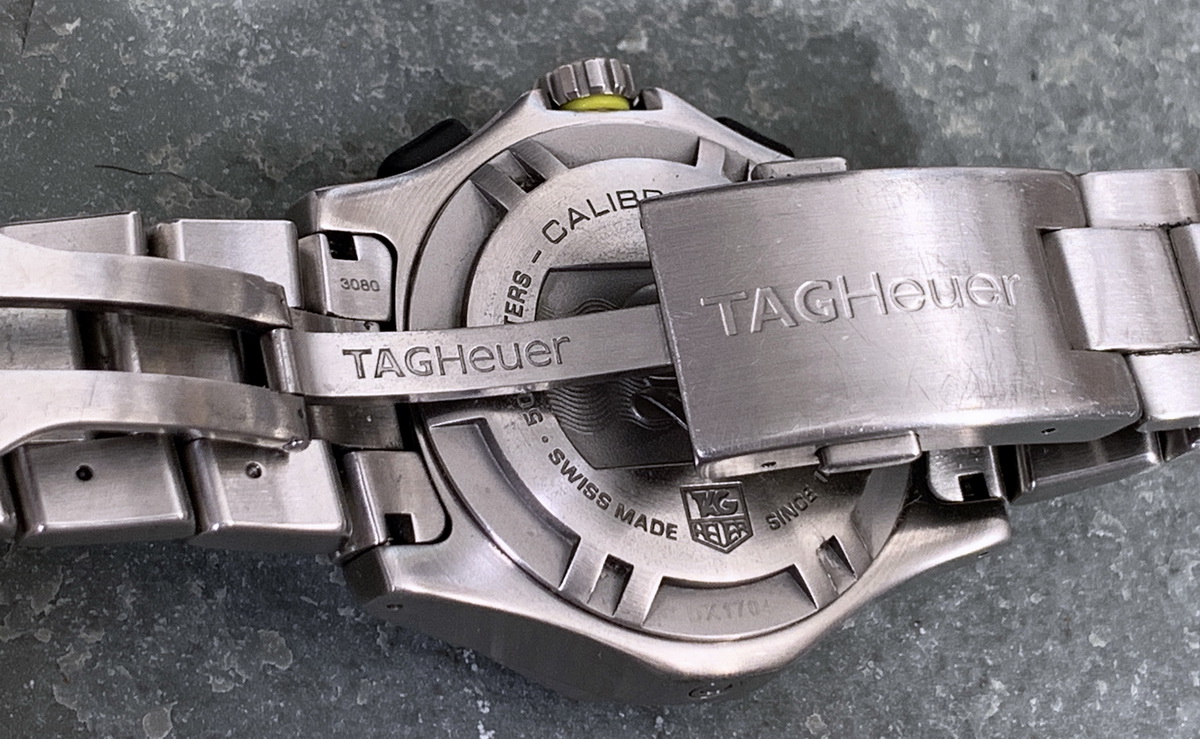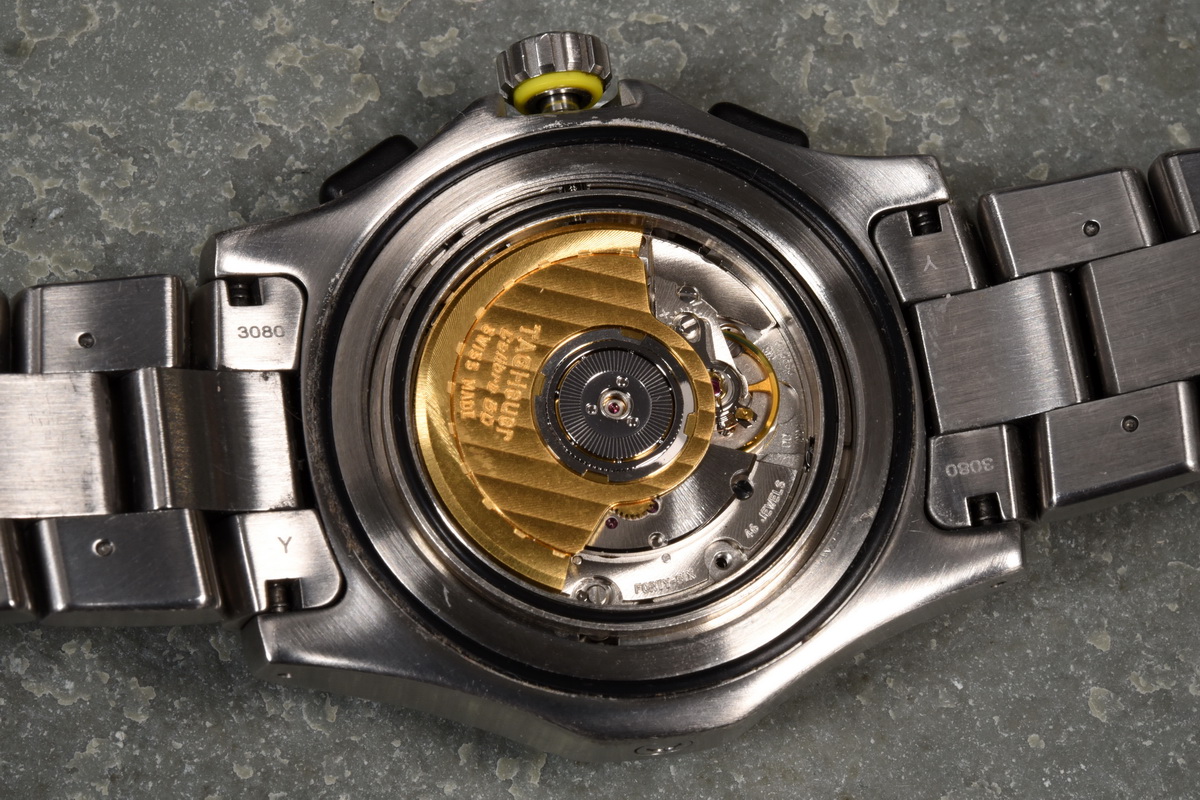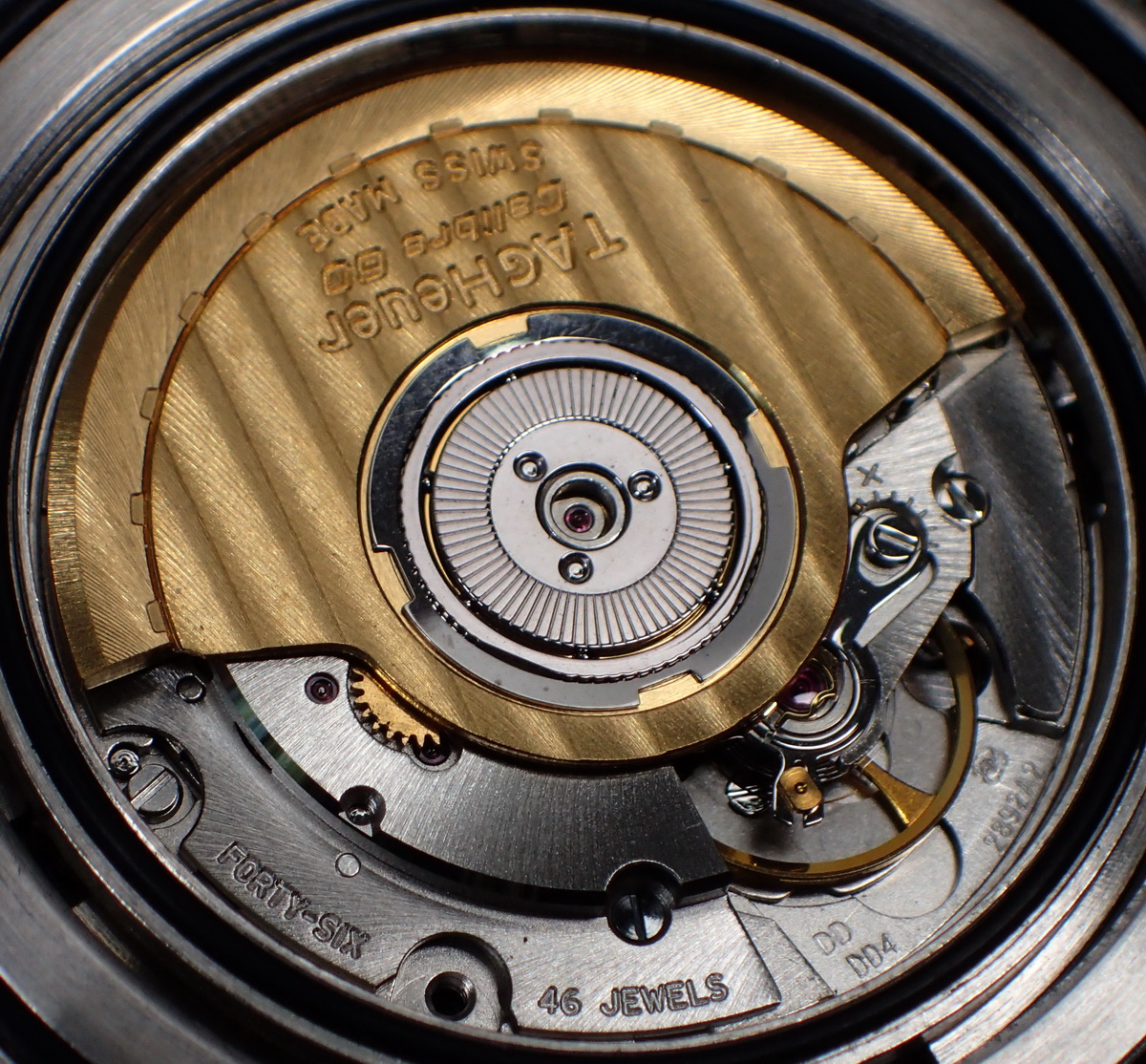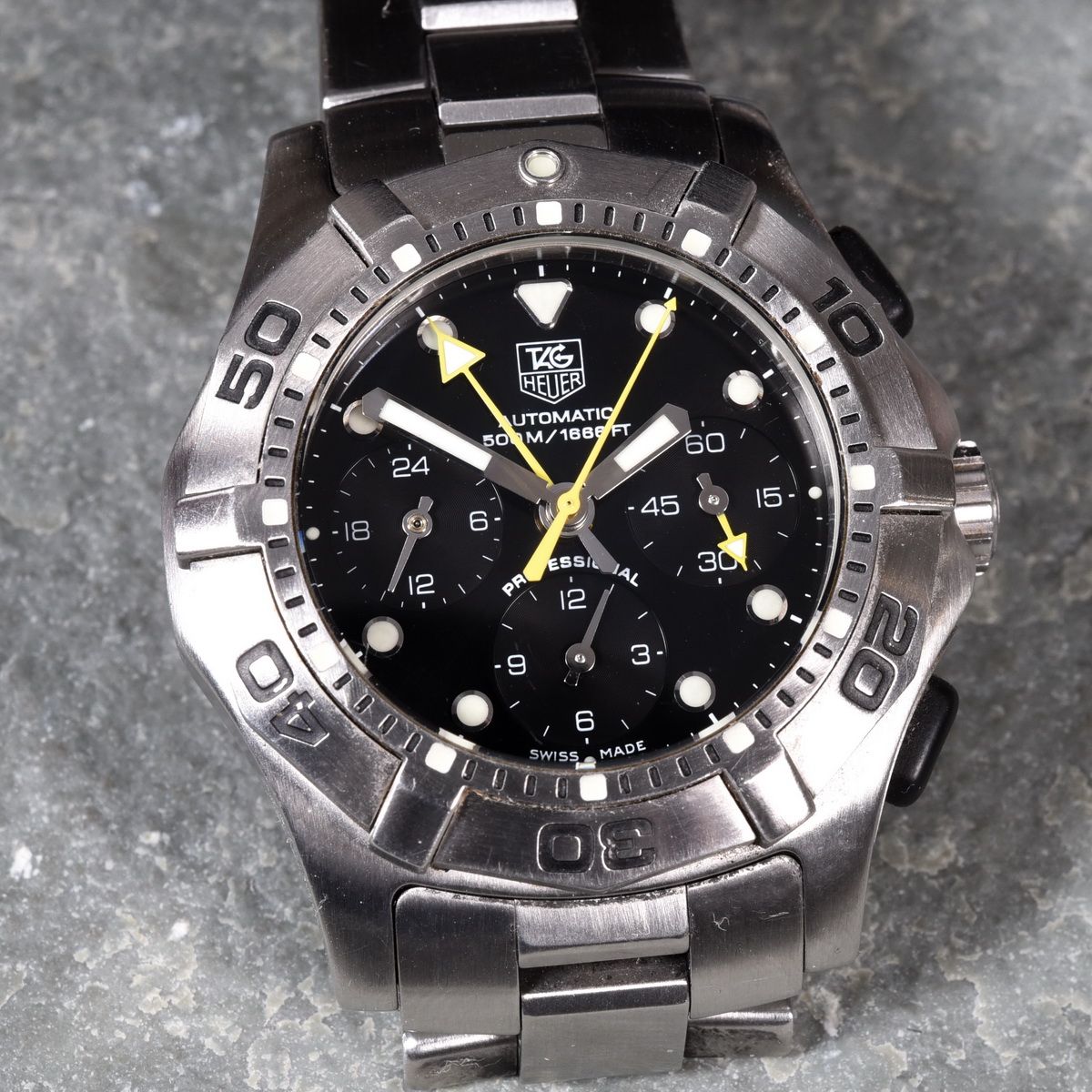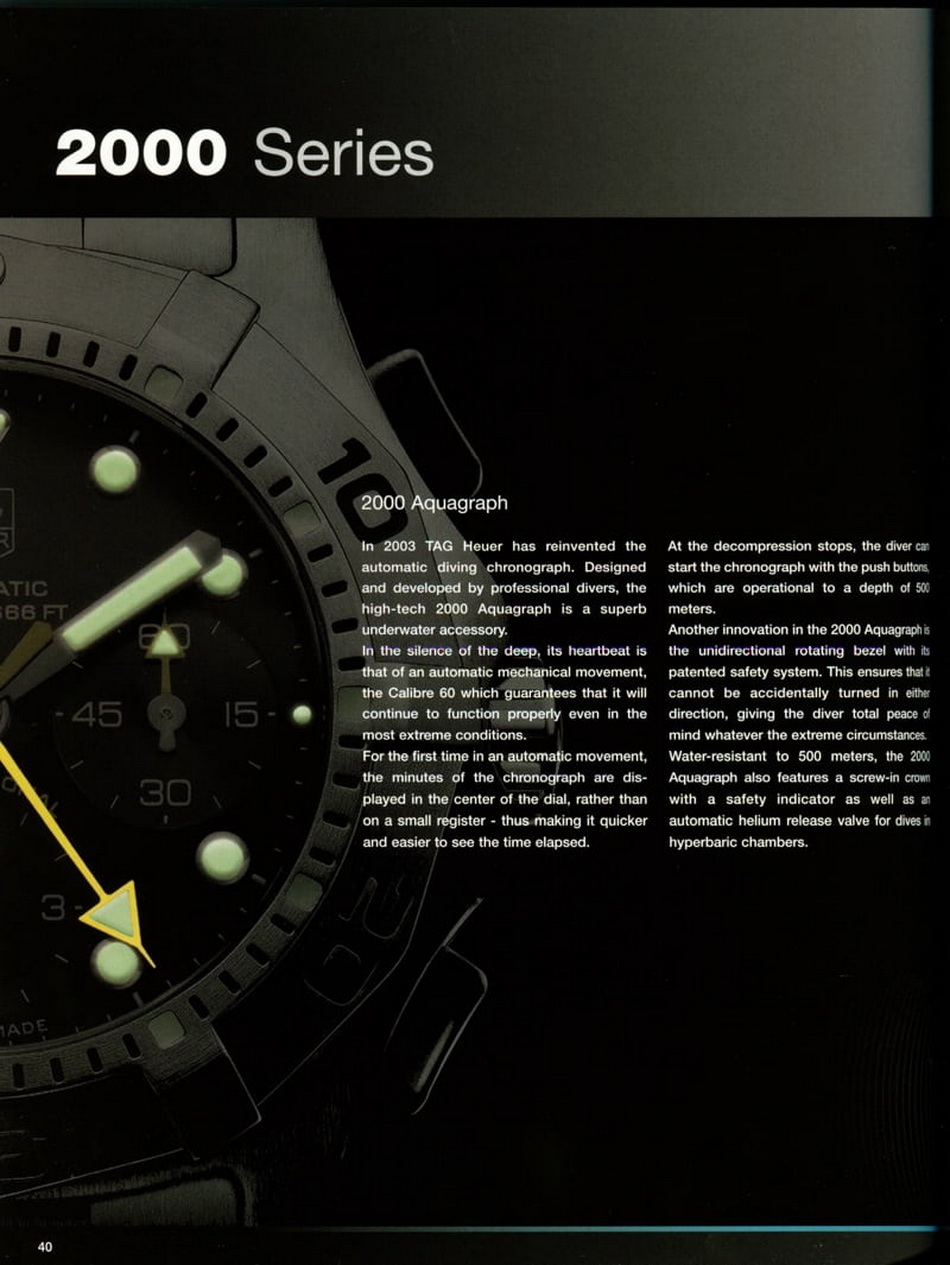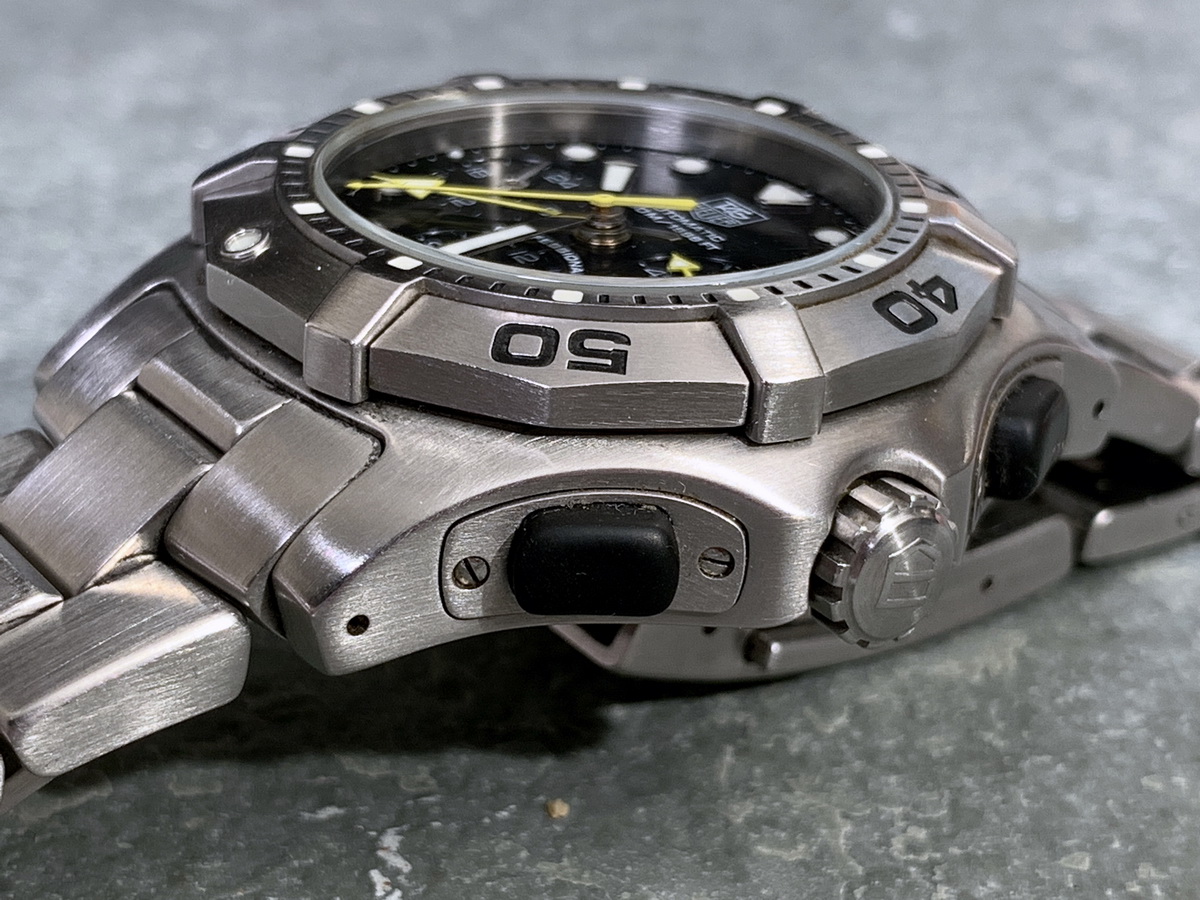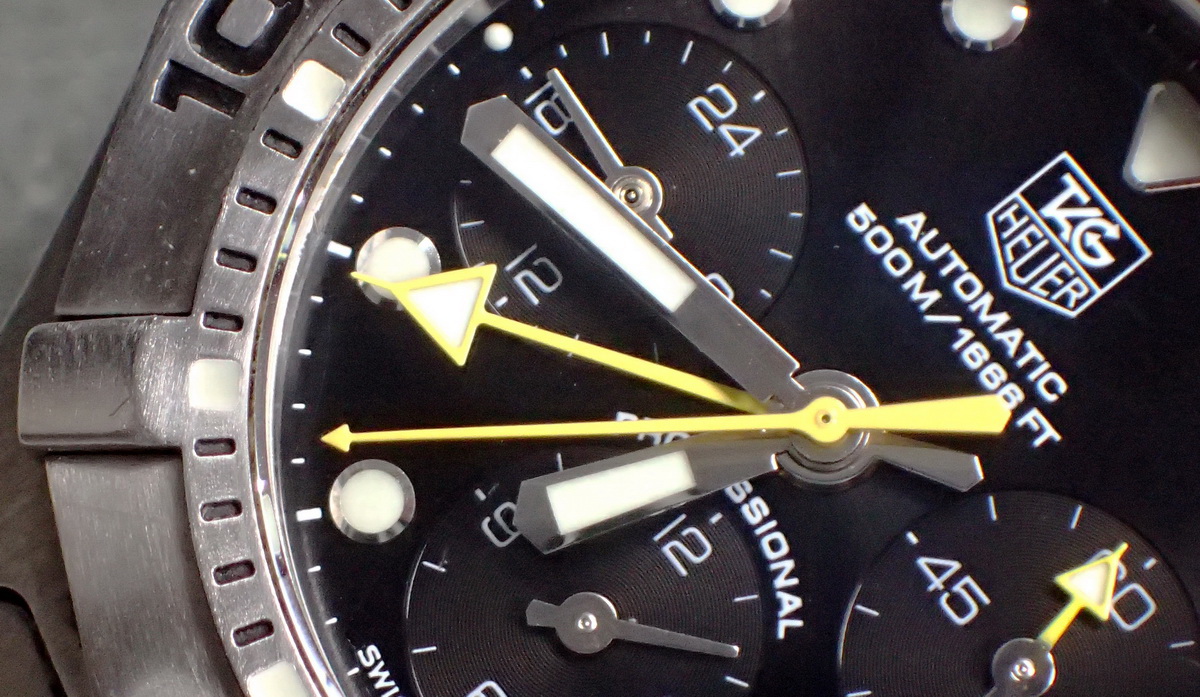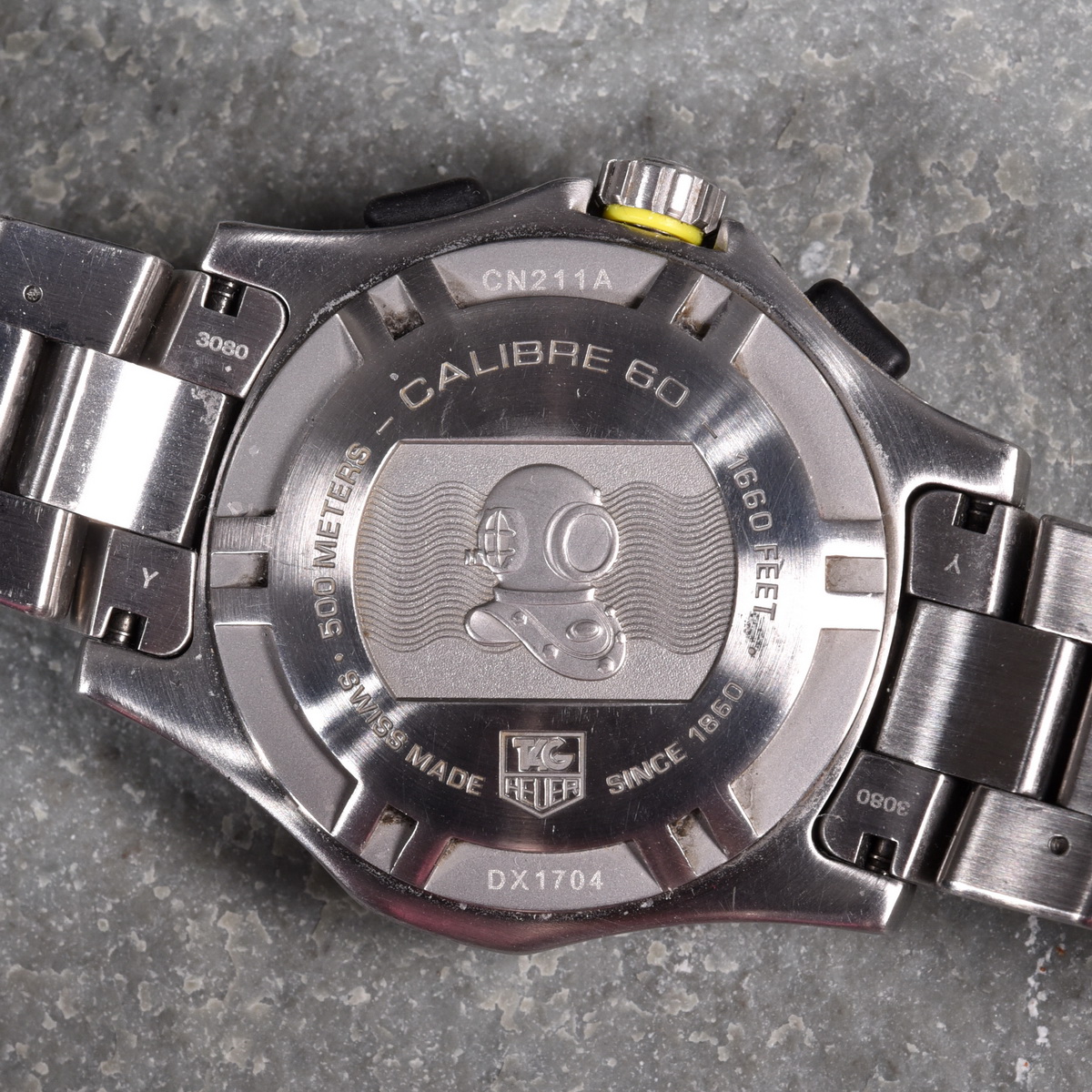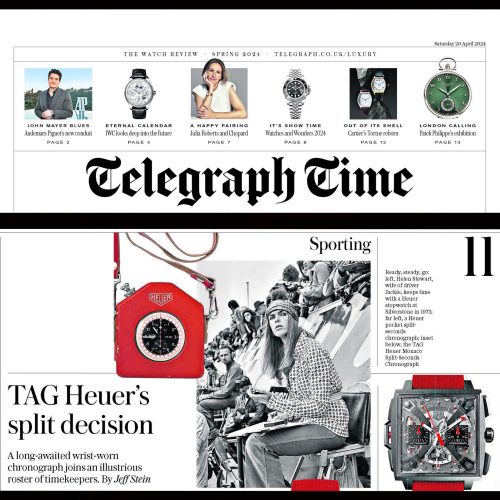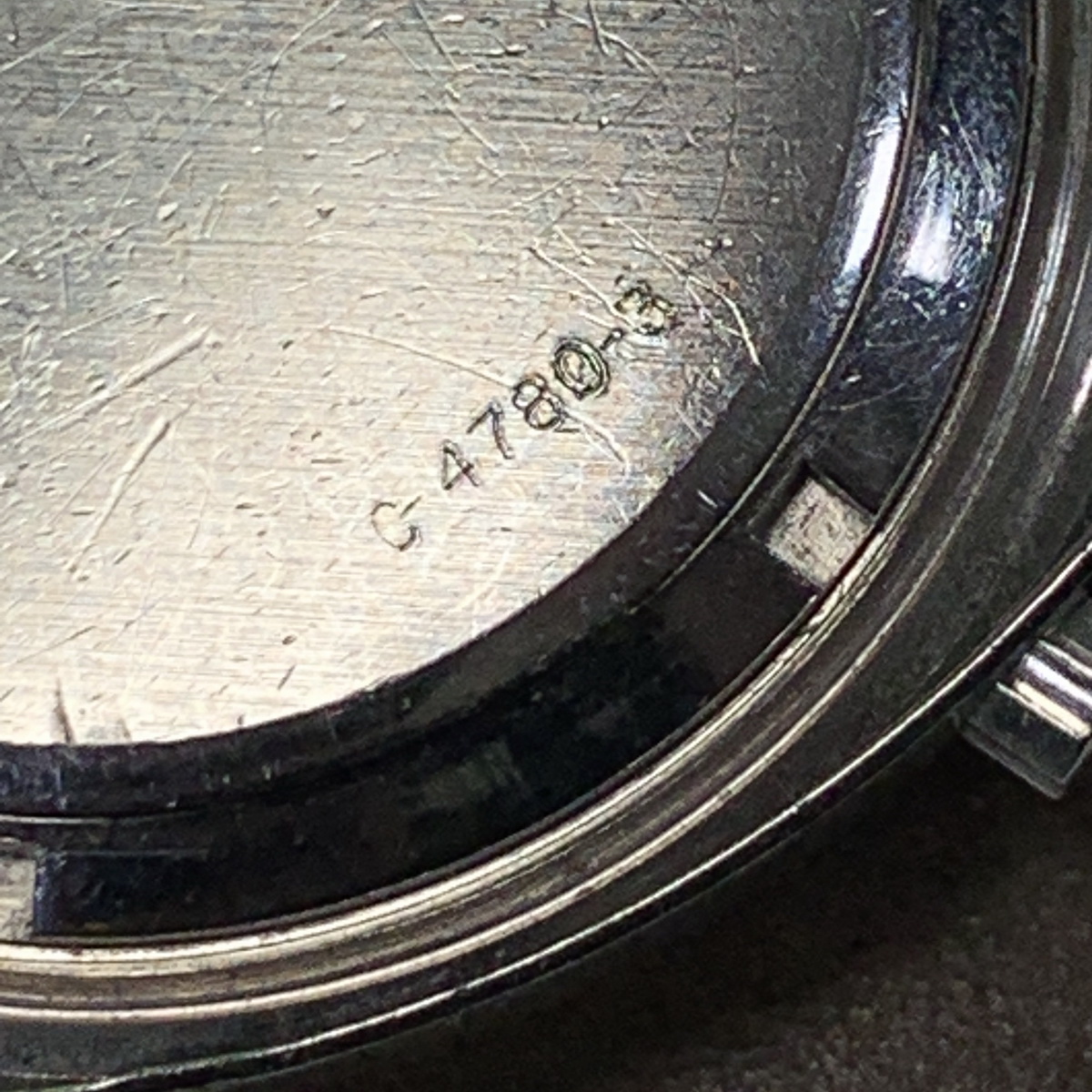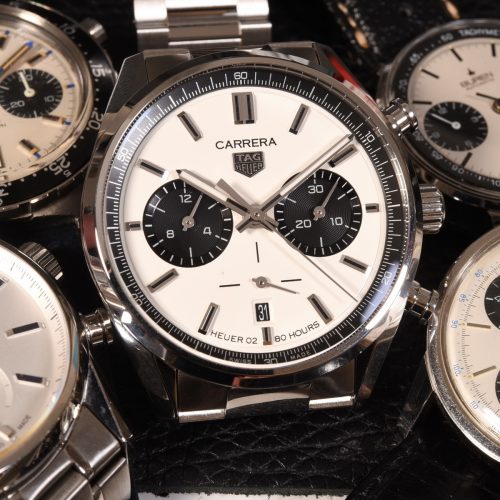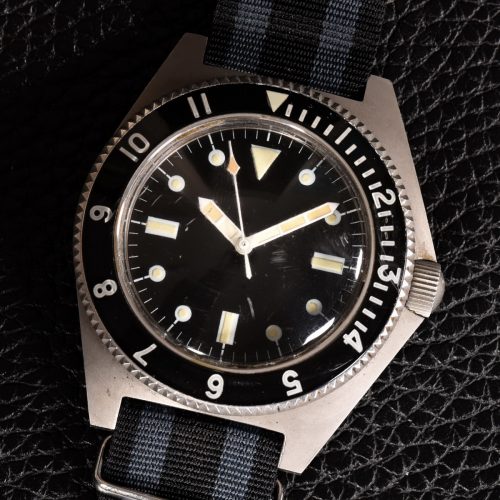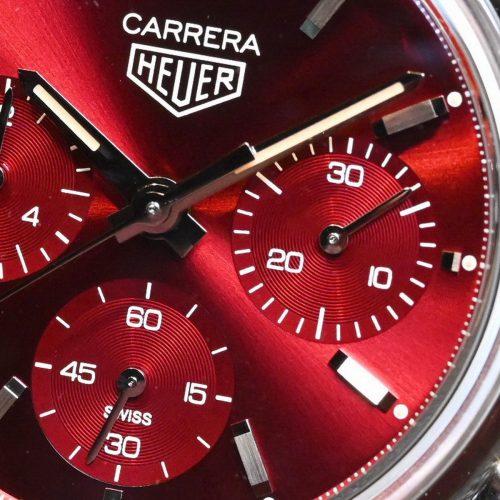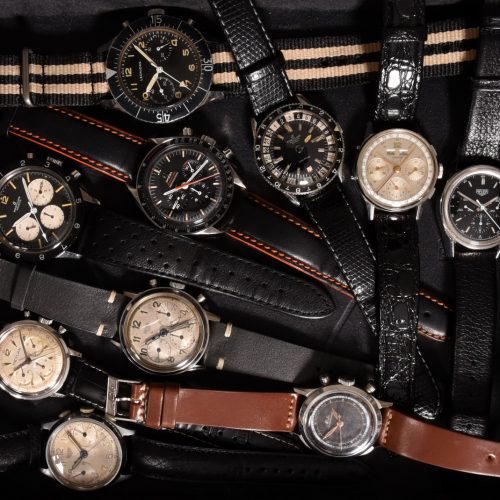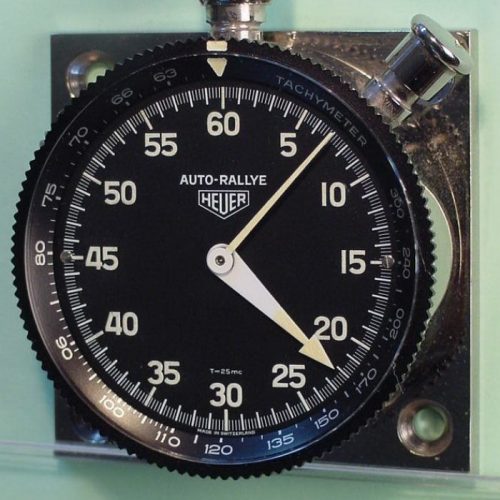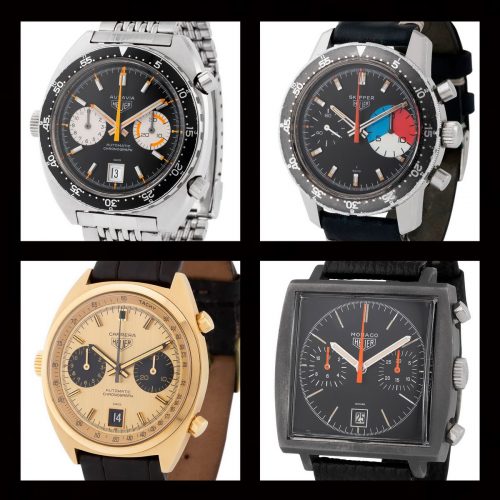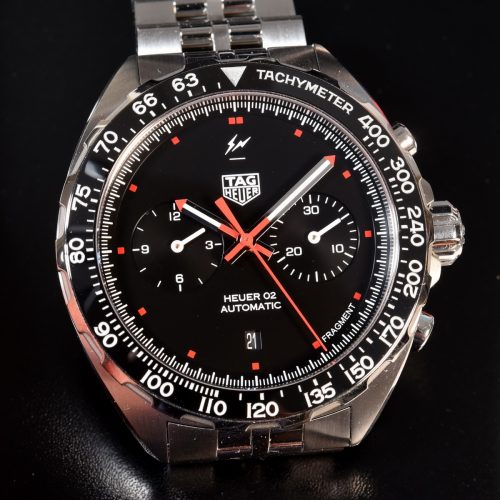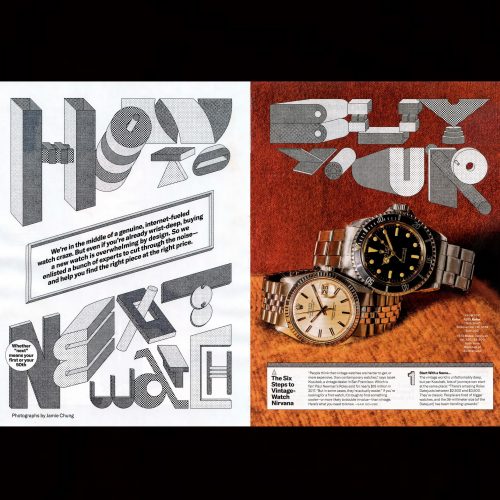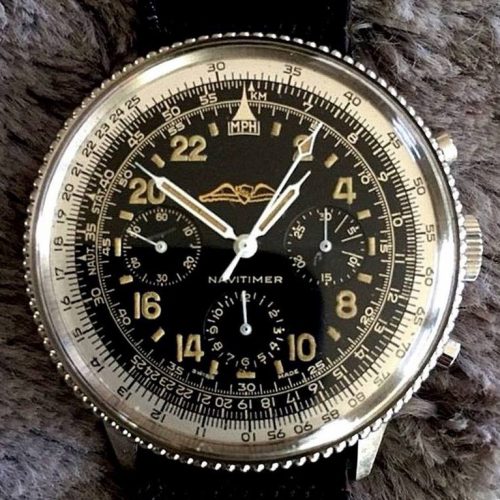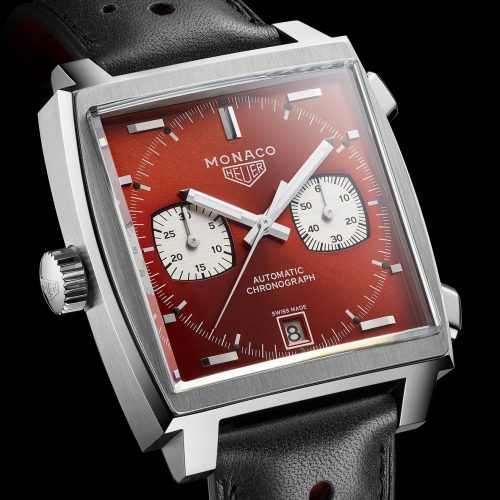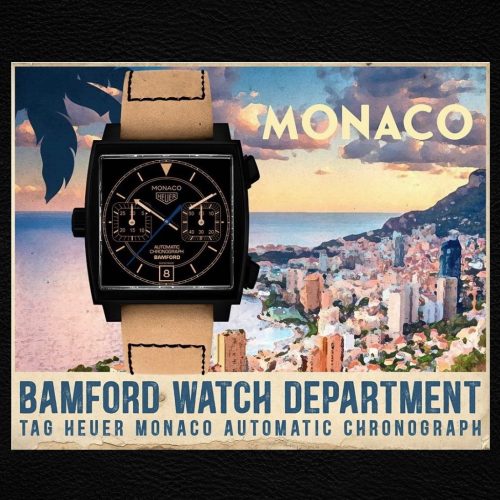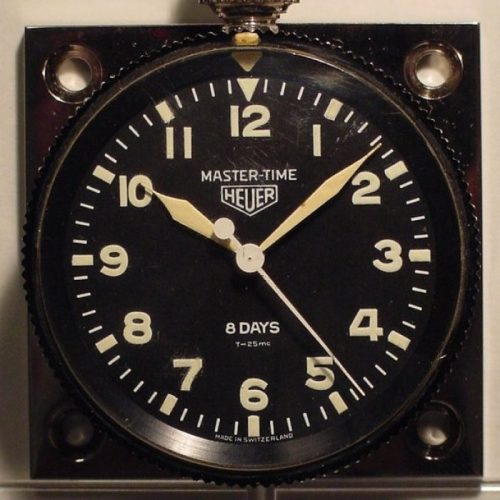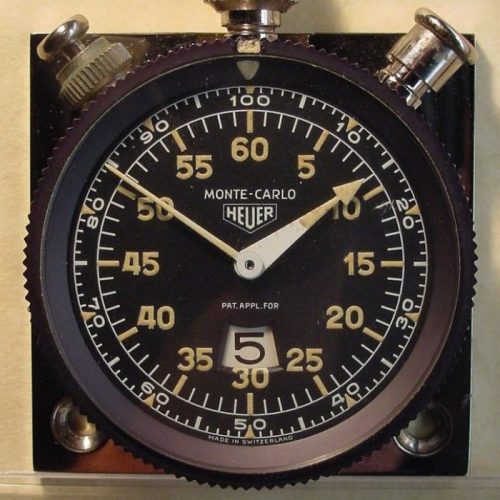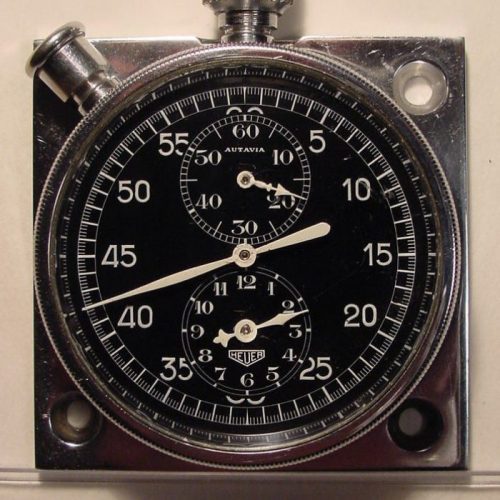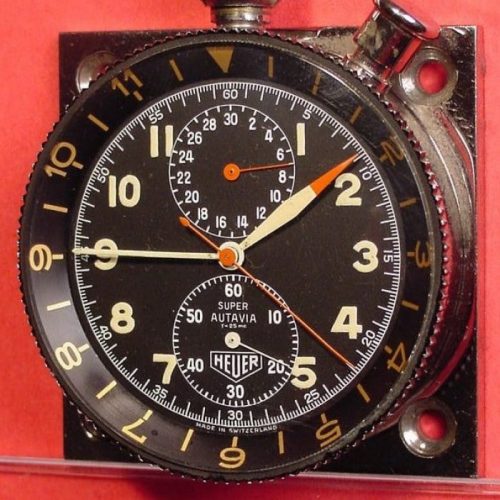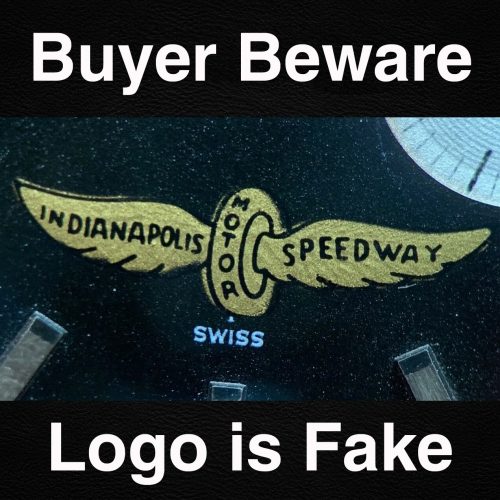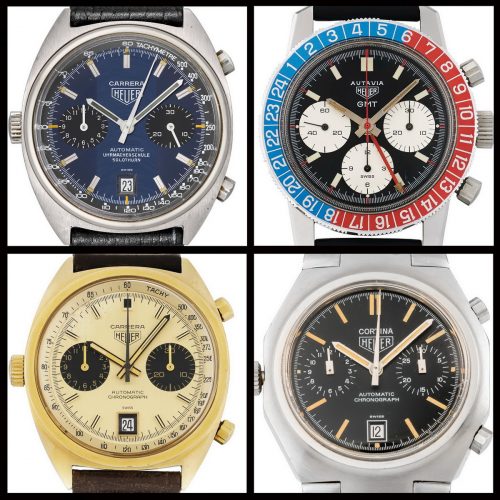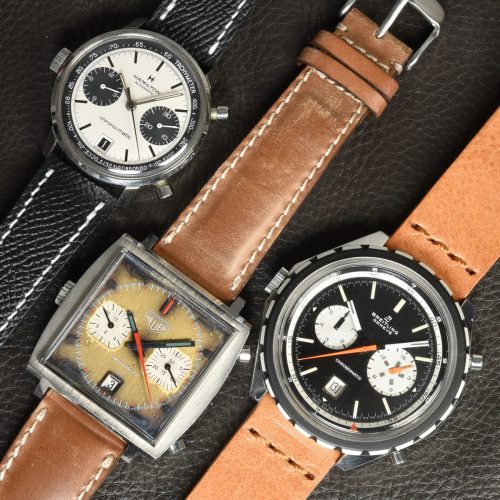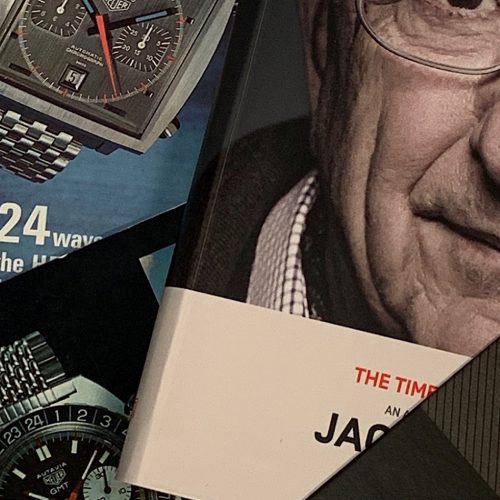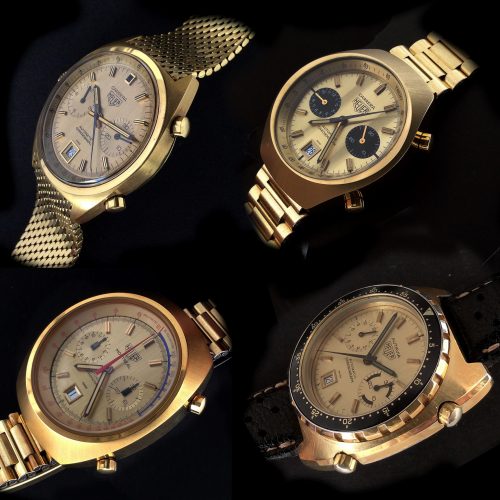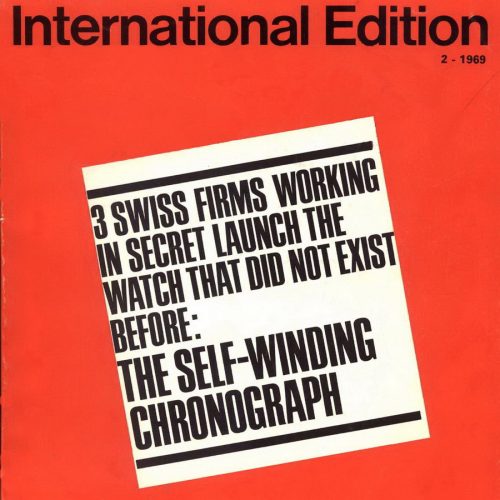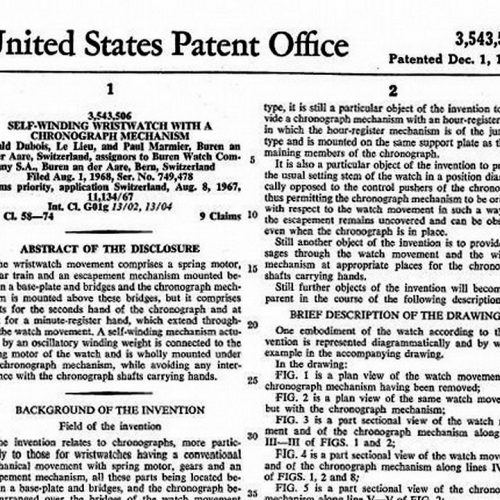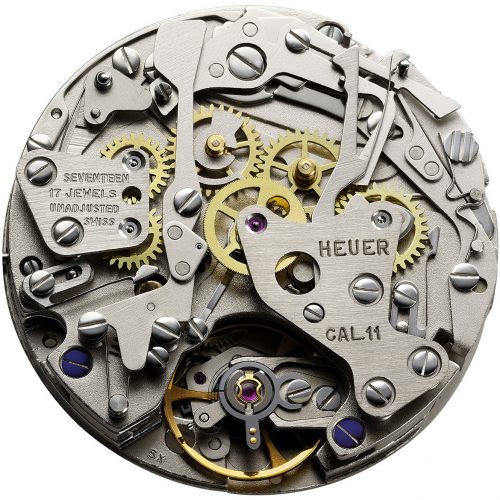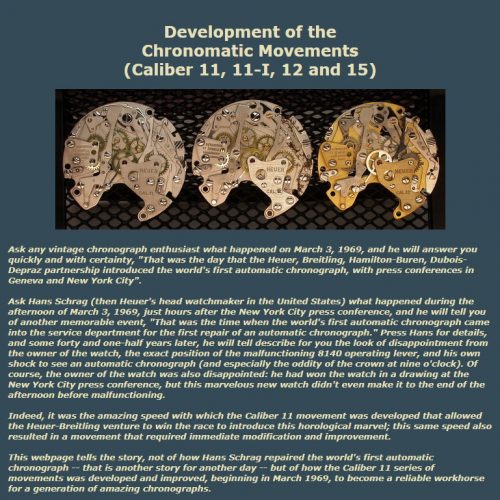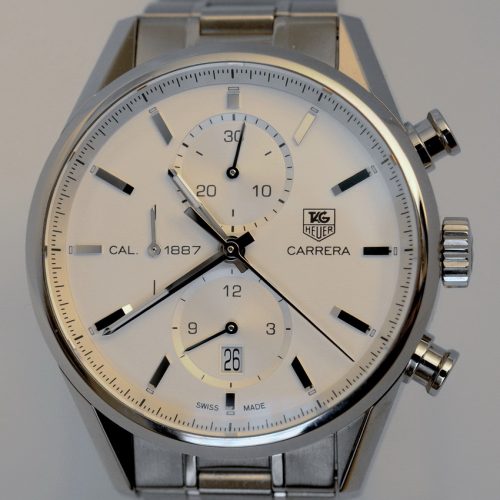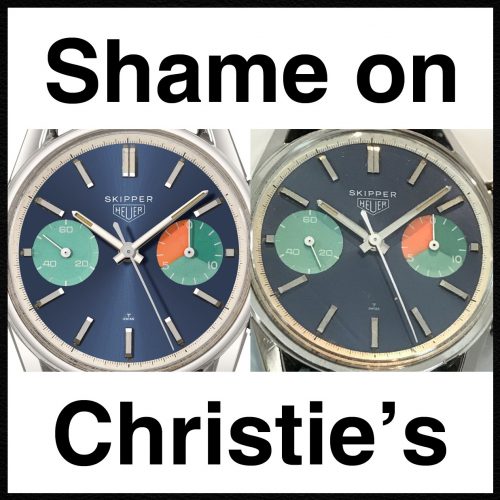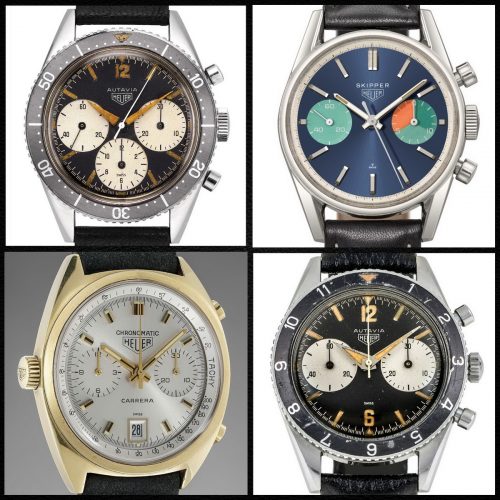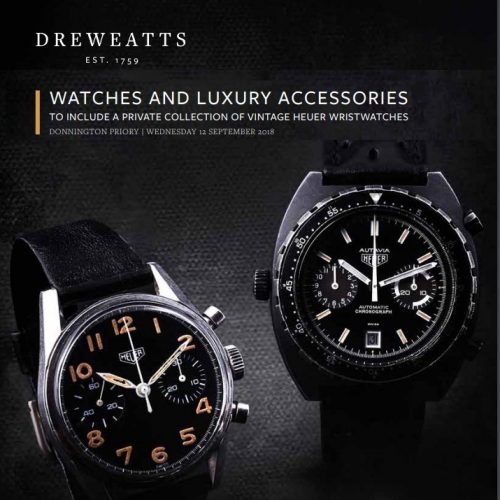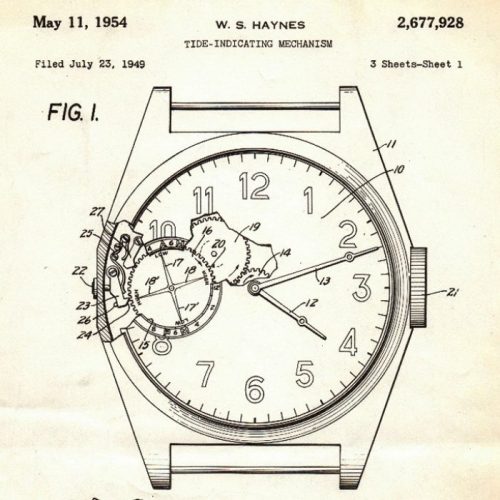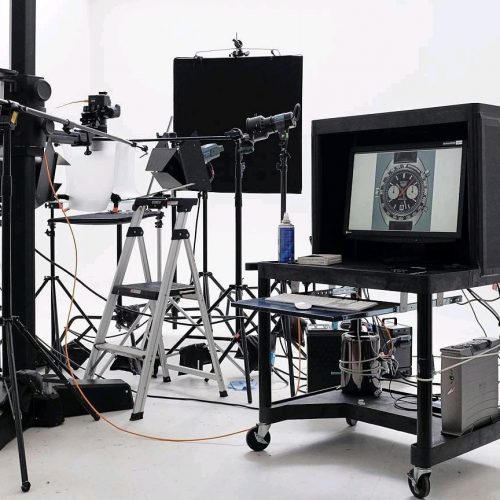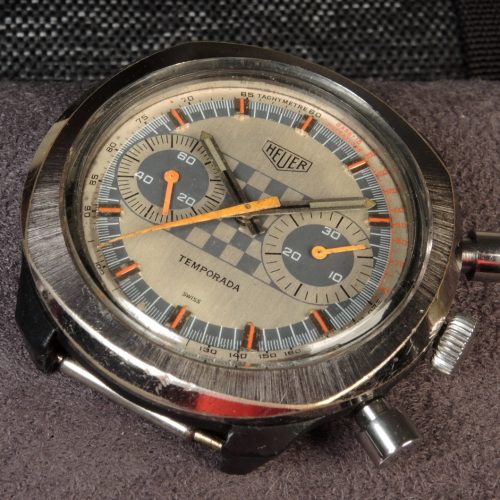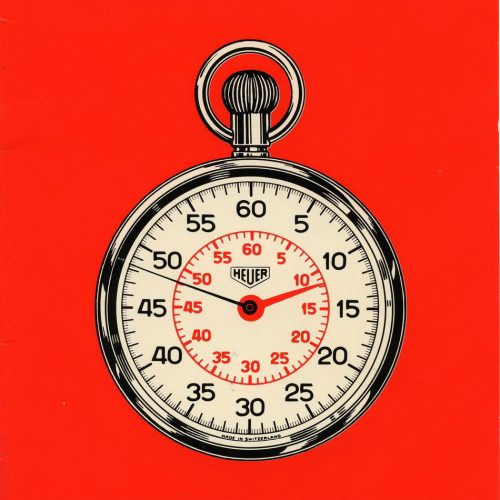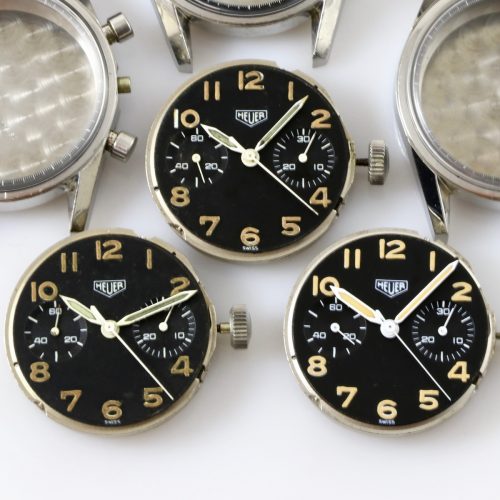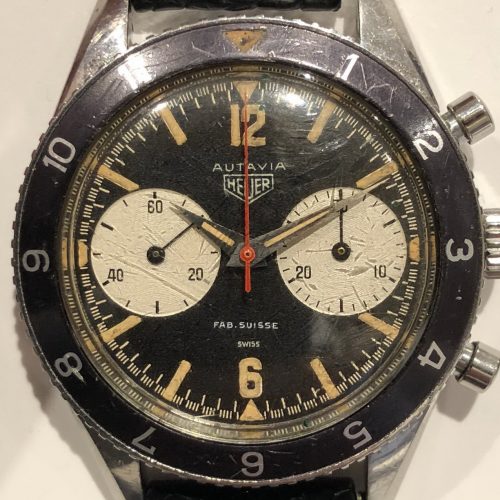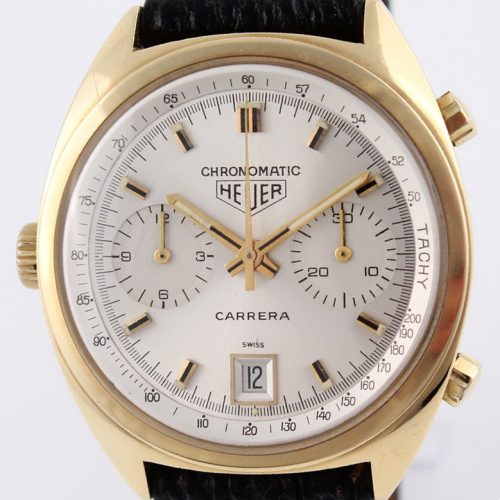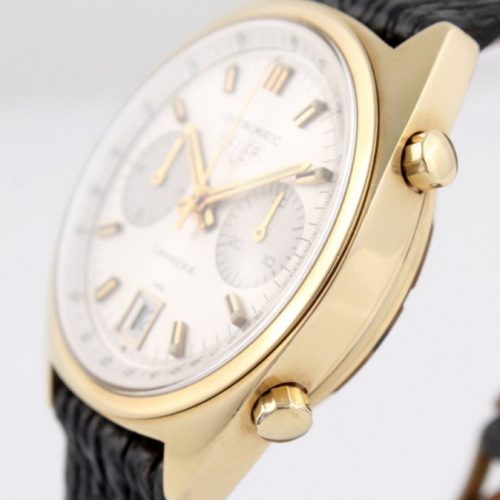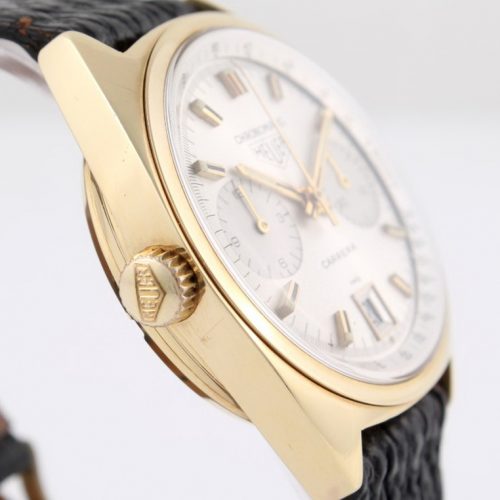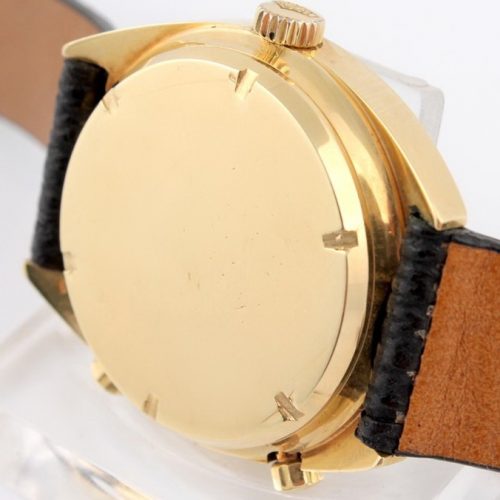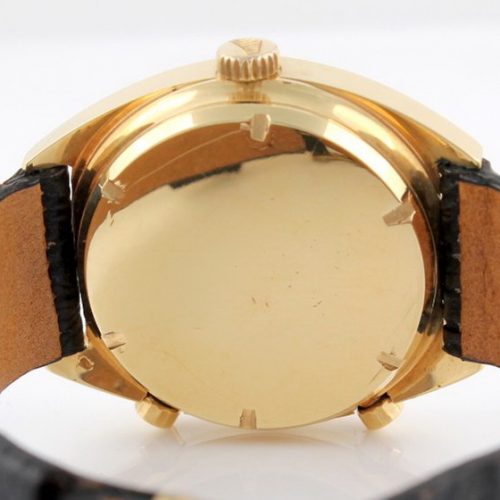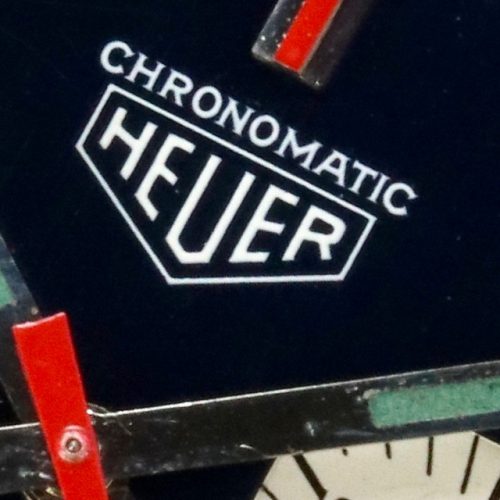On Thursday, April 23, 2020, I posted an Instagram story about the watch that I have been wearing most often during the COVID-19 quarantine. [For those reading this some years from now, who may not be familiar with this chapter in world history, the COVID-19 quarantine was an extended period, generally beginning in March 2020 in Europe and North America, when much of the world’s population was under government orders to shelter in place or stay at home, in an effort to slow the spread of the COVID-19 pandemic.] The watch that I have worn most during the COVID-19 quarantine (say, from mid-March to mid-April) is the TAG Heuer Aquagraph 2000, Reference CN211A, made by TAG Heuer during the period 2003 through 2009.
The Instagram story attracted a lot of interest, with many readers who are familiar with the Aquagraph praising the watch and others asking for more information about it. In this posting, we’ll cover the basics of the TAG Heuer Aquagraph, add some new photos, and provide links to reviews where you can find additional information.
The TAG Heuer Aquagraph 2000 is an awesome watch. It was fun seeing it get some much-deserved love during the 24 hours that the story ran on Instagram. This posting will allow others to learn more about the watch, now that the Instagram story has come and gone.
The TAG Heuer Aquagraph 2000
Aquagraph 2000, Reference CN211A, was introduced by TAG Heuer in 2003 and was produced until around 2009. (At some point in its life, the “2000” was dropped from the name, so that it was simply called the “Aquagraph”, but I will use the names interchangeably in this posting.) The brushed stainless steel case measures approximately 44.5 millimeters across the dial, or approximately 41 millimeters if measured vertically (from the top of the case to the bottom of the case). Thickness is 16.2 millimeters, with the lug-to-lug measurement coming in at 50 millimeters; it’s 22 millimeters between the lugs.
The Aquagraph uses an oyster-style bracelet, with solid links, which tapers from 22 millimeters to 19 millimetsr, across the clasp. On the full-length bracelet, the Aquagraph will weigh in at approximately 225 grams, that’s right, half a pound. The Aquagraph has a sapphire crystal and is waterproof to 500 meters.
The pushers are protected by rubber covers, giving the Aquagraph a distinctive look. The rubber covers are held in place by screw-in plates, allowing for replacement if the rubber deteriorates or is damaged. As is typical for a dive watch, the bezel is unidirectional, and locks into place. To rotate the bezel, you have to push down on the bezel with two fingers and continue to hold it down.
The movement is the ETA 2892-2, with a Dubois-Depraz chronograph module attached. TAG Heuer gave this movement the name “Calibre 60”, although it would not be used in any other watches.
The movement has 46 jewels, and power reserve in the range of 45 hours. Notice that the movement is marked for both the ETA 2892 movement (2892A2) and the Dubois-Depraz module (DD4).
The TAG Heuer Aquagraph has an hour recorder with 12 hour capacity, more than needed for the typical dive or run, but it makes the watch more useful as a general purpose chronograph. The register at nine o’clock shows the time on a 24-hour basis, but this hand may not be set independently of the main time-of-day hands. This may be useful for divers spending multiple days below the surface in a deep-diving submersible or for cave diving, but I’m not sure what other use the 24-hour dial might have.
Production and Price History
The Aquagraph was first shown in the 2004 TAG Heuer catalog. The catalog states that the Aquagraph 2000 is the first automatic chronograph to use a center-mounted chronograph minutes hand. (While this claim is not correct, as Heuer and several other brands had used the Lemania 5100 decades earlier, it does highlight what may be the most important feature of the watch.) Other features mentioned in the catalog include the screw-down crown, with an indicator to alert the user when the crown has not been screwed down, and an automatic helium release valve (on the left side of the case). The Aquagraph was produced through 2009, and did not have a specific replacement in the TAG Heuer product line. Comparable chronographs in recent TAG Heuer catalogs would include the Aquaracer chronographs with the 500 meter depth rating.
The Aquagraph 2000 originally sold for around $3,500. Used samples in nice condition are currently selling in the $1,500 to $2,000 range.
On the Wrist
For a couple of years, the Aquagraph 2000 has been my “go-to” watch for the morning run. The center-mounted chronograph minute hand is a great feature when you are actually counting the minutes, making the Aquagraph a natural choice. And while the 500 meter depth rating is not an essential criterion for a running watch, the rugged nature of the watch, and the exceptionally good fit and finish, make it a natural choice for any type of rugged activity or adventure. Of course, Heuer made many other chronographs powered by the Lemania 5100 movement, but there’s just something about the 500 meter depth rating and the 225 grams of steel that make this one feel “bulletproof”.
During the COVID-19 quarantine, whether I have been working from home or going into the office, the attire has been more casual than usual, and the Aquagraph has definitely gotten the most wrist time of any watch in my collection. Indeed, there hasn’t been a single day when I have had to consider whether or not my watch would fit under the relatively tight cuff of a dress shirt. This is a watch that works perfectly with a sweatshirt or casual work-shirt.
The TAG Heuer Aquagraph is super legible, with the bright yellow hands for chronograph minutes and seconds, with arrow pointers at the ends. The running seconds hand, at three o’clock, also has a lume-filled yellow arrow at the end, providing a quick assurance that the watch is running, even when the chronograph is stopped. The lume on the hands, dial and bezel glows like crazy, being easy to read in any lighting conditions.
While the Aquagraph 2000 looks massive, it wears very well on the wrist. Perhaps it’s the weight of the bracelet counterbalancing the weight of the watch itself, but the Aquagraph doesn’t feel top-heavy. In fact, it’s heavy all the way around, but very well-balanced. The lug-to-lug measurement sounds imposing, but the watch fits surprising well on my small wrist.
The TAG Heuer Aquagraph is a pleasure to wear and use as a chronograph. Winding is very smooth and setting has a very precise feel, with a nice hacking feature. The crown screws down and locks reliably, with no concerns that the threads are being stripped or abused. The chronograph operation is perfect — start, stop and reset are quick and reliable, even wearing heavy gloves in the winter. With the Aquagraph 2000, you will definitely know that you are wearing a watch, but it’s the sense of wearing a solid, reliable tool that is up to just about any task.
The Bottom Line
Collectors can have a lively debate about whether there is a “perfect” chronograph or perhaps it would be phrased as whether there is a particular model that represents the “ideal form” of chronograph. Collectors who favor watches from the 1960s can make the case for the Heuer Carrera, the Omega Speedmaster, the Rolex Daytona or the Breitling C0-Pilot, among many others. Ultimately, when we are looking for the “ideal” or “perfect” form of chronograph, we have to ask the question, “for what purpose?” Timing race cars is different from timing the start of a yacht race, and we can’t expect the industrial engineer to want the same watch as the fighter pilot. So too, collectors can debate whether there is a perfect dive watch, pilots watch, regatta watch, dress watch, etc.
I once heard a wise man suggest that there has never been an iconic dive chronograph (or perhaps he said “a perfect dive chronograph”). Yes, there are iconic chronographs and, yes, there are iconic dive watches, but he suggested that these two forms of timepieces have never been combined into a perfect dive chronograph. Perhaps it is in trying to combine the two forms into a single tool that some purity of design is lost.
Having worn the TAG Heuer Aqugraph for long stretches over the last few weeks, I can report that the Aquagraph is the perfect dive chronograph, at least to my eye, on my wrist and in accordance with my criteria (and within my budget). Honoring the approach of the Carrera from 1963, we can say that every element of the watch promotes its purpose. Consistent with Chekhov’s placement of the gun on the wall, we can say that there is no element that does not support the watch’s purpose — to be used as a chronograph when diving deep under water.
So do I suggest that the TAG Heuer Aquagraph belongs in the same conversation as the legendary chronographs, Carrera, Daytona, Speedmaster and Navitimer? No. And will it challenge the Submariner, Fifty Fathoms and Seaamaster as dive watches? No way. But my time with the TAG Heuer Aquagraph has convinced me that the watch is perfectly-designed and well-built as a dive chronograph. And these weeks have also proven that the Aquagraph is ideal for the morning run and for day after day of working from home.
References / Additional Reading
Hands on Review — TAG Heuer Aquagraph (Ref. CN211A), Marc, on Calibre 11 (October 7, 2012)
TAG Heuer Aquagraph — The Best TAG Heuer Ever Made, Adi Soon, on IsoChrono (August 7, 2019)
TAG-Heuer aquagraph CN211A, a short review, Louis, on TimeZone (March 11, 2010)
In Praise Of The Central Minutes Chronograph, Jason Heaton, in Hodinkee (February 19, 2013)
